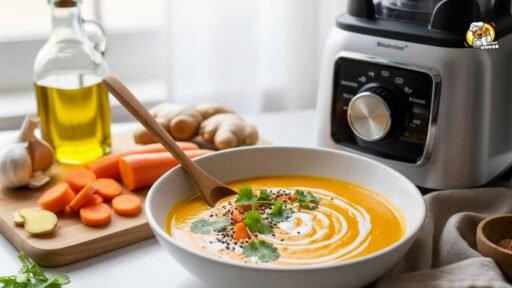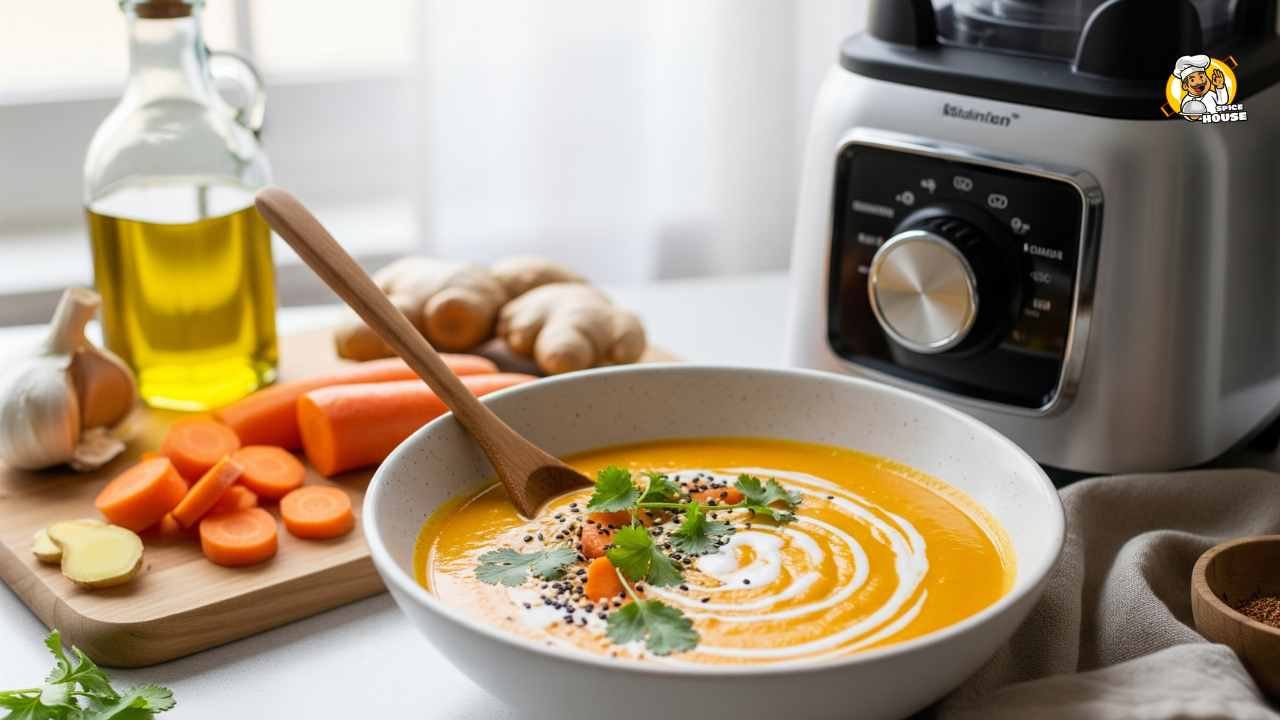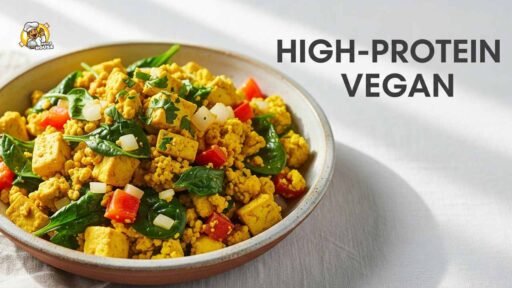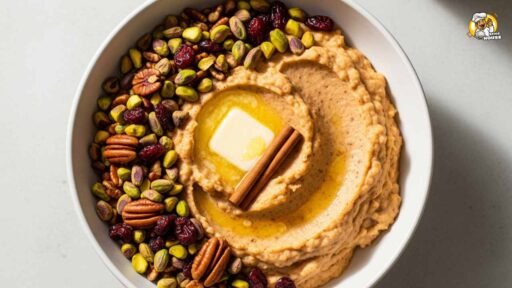Here’s the hard number that sets the table: irritable bowel syndrome affects an estimated 10–15% of adults, according to the National Institutes of Health. Layer on top the soaring interest in “microbiome-friendly” foods and small appliances, and you get a rare crossover trend: health, home cooking, and hardware all moving in sync.
The debate is predictable yet useful. Are blender soups like ginger carrot actually gut-friendly—or just clever rebrands of an old idea? Consumers want soothing, high-fiber meals without heavy cream or long simmer times. Investors are tracking how this drives demand for high-speed blenders from market leaders like Vitamix (premium) and SharkNinja’s Ninja line (mass premium). Employees across grocery, CPG, and appliance makers are being re-tasked toward “functional” benefits. The pitch sounds great. The question is whether the science—and the soup—deliver. Let’s dive into the data, the method, and the fallout.
The Data:
-
According to NIH and the American College of Gastroenterology, IBS impacts roughly 1 in 10 adults, and up to 15% in some regions—making “easy-to-digest” weeknight meals a real market, not a fad.
-
USDA data shows one cup of carrots provides about 3–4 grams of fiber and well over 100% of the daily value for vitamin A—useful for gut and immune support without dairy.
-
FAO estimates global carrot output at over 45 million metric tons annually, with ginger production measured in the millions of tons as well. Translation: supply is stable, prices relatively sane, and shoppers can actually find these ingredients year-round.
Quick Gut-Friendly Ginger Carrot Soup: Blender Recipe
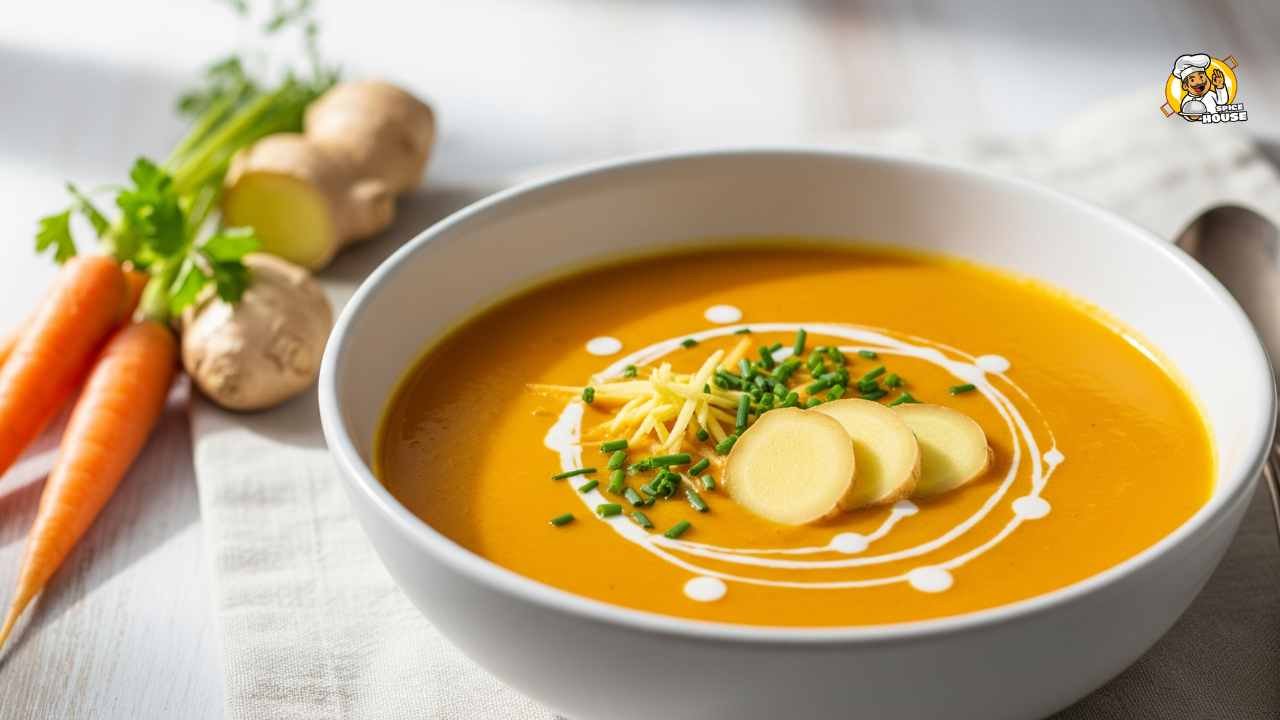
Time: 30 minutes start to finish; Serves: 4
Ingredients:
-
1 tablespoon olive oil or ghee
-
1 medium onion, chopped (optional for low-FODMAP; sub green tops of scallions)
-
1 pound carrots, peeled and chopped
-
1–2 inches fresh ginger, peeled and sliced (start with 1 inch if heat-sensitive)
-
2 garlic cloves (optional; omit for low-FODMAP)
-
1 teaspoon ground turmeric (or 1-inch fresh turmeric, peeled)
-
4 cups low-sodium vegetable or chicken bone broth
-
1 tablespoon white miso or 1 teaspoon apple cider vinegar (acidity for balance)
-
1/2 cup coconut milk or plain yogurt (dairy-free or dairy)
-
Salt and black pepper to taste
-
Toppings: pumpkin seeds, chopped cilantro, a swirl of yogurt, chili oil (optional)
Method (condensed):
-
Sauté aromatics in oil (onion/garlic if using) 3–4 minutes until fragrant.
-
Add carrots, ginger, and turmeric; stir 2 minutes to bloom spices.
-
Pour in broth; simmer 12–15 minutes until carrots are tender.
-
Transfer to a blender (Vitamix/Ninja), add miso or vinegar and coconut milk/yogurt; blend 45–90 seconds until silky. Vent the lid for steam and hold a towel over the cap.
-
Taste, adjust salt/acid. Finish with toppings and serve.
Gut-Friendly Ginger Carrot Soup: Blender Recipe: Step-by-Step Guides
Step 1: Choose ingredients that love your gut (and your weekday)
This soup works because it stacks gentle, evidence-backed choices. Carrots bring fiber without heaviness and natural sweetness that lets you skip sugar. Ginger adds zing while supporting digestion; it’s well-studied for nausea relief and appears to have anti-inflammatory effects. Turmeric gives color, warmth, and polyphenols you actually want in your weekly rotation. Broth brings minerals and body. And a small dose of fat—olive oil, ghee, or coconut milk—helps you absorb fat-soluble nutrients and smooths the mouthfeel. No cream needed.
Now, the part people skip: personalization. If you’re sensitive to FODMAPs, drop the onion and garlic and use only the green tops of scallions for oniony lift. Swap miso with a dash of apple cider vinegar if fermented foods don’t sit well. Yogurt works for some; coconut milk is safe and luscious for most. If you’re dairy-free, you still get a velvety texture.
Spice is the choice. Fresh ginger is brighter. Ground ginger is fine if that’s what you have—use 1/2 teaspoon to start. Turmeric can stain (and it can taste muddy if overdone), so begin with 1 teaspoon and move up only if you love it. A little black pepper helps turmeric’s curcumin play nicely with absorption. Final note: Use low-sodium broth so you can build flavor on your terms. Salt at the end, not the start.
Step 2: Prep smart: roast, simmer, or straight-to-blend?
For weeknights, simmering is the move. It softens carrots fast and keeps the pot count low. But there’s a case for roasting—caramelizing carrots at 425°F for 20–25 minutes concentrates sweetness and can improve tolerance for some folks who digest cooked veg better than raw. If you roast, toss the carrots with a little oil and a pinch of salt, then proceed to blend with warm broth and aromatics. The soup gets a deeper, slightly smoky base.
Ginger decisions matter too. Peel with a spoon to avoid waste. Slice thinly if you’re simmering; the blender will do the rest. If your blender is older or underpowered, microplane the ginger so you don’t end up with spicy threads. Don’t stress about perfect cuts—this is soup. Uniformity only affects cook time.
Timing is friendly. While onions soften, chop carrots. While carrots simmer, set out toppings. If you’re batch-cooking, double everything and portion into wide-mouth jars or freezer-safe containers. For toddlers or low-heat palates, start with a 1-inch knob of ginger and no chili oil. For heat lovers, add a pinch of red pepper flakes during the sauté; capsaicin brings warmth without blowing up the gut. And if you need protein, top bowls with shredded rotisserie chicken or a scoop of lentils (if tolerated). This is a framework, not a fixed route.
Step 3: Blend like a pro: Vitamix vs Ninja vs what’s already in your cabinet
High-speed blenders do produce creamier soups, period. Vitamix’s variable-speed control makes it easy to start slow and ramp up, reducing splatter and incorporating air only at the end. Ninja’s multi-blade towers can pulverize quickly, too; just don’t overfill with hot liquid. Either way, steam is your main risk. Vent the lid by removing the center cap and covering it with a folded towel. Fill the container no more than halfway with hot soup for the first batch.
Order matters. Put liquids at the bottom, then soft ingredients (cooked carrots, aromatics), then spices and coconut milk or yogurt. Start low; increase to high for 45–90 seconds until glossy. If your blender warms by friction, you can even skip simmering and blend raw carrots with hot broth, then run the machine 4–5 minutes until steaming. That trick saves a pot, but cooked ginger tastes rounder and tends to be gentler on sensitive stomachs.
No high-speed blender? Use an immersion blender right in the pot. Blend longer—2 to 3 minutes—and finish with a quick whisk to integrate any strays. You can also do two passes: immersion first, then a quick blend in a standard countertop model for extra silk. Either way, aim for a texture that drapes a spoon, not a mousse. If the soup looks foamy, pulse a few times on low and let it sit 2 minutes; bubbles will relax.
Step 4: Build flavor like a chef: acid, fat, salt, and a little heat
Great soups balance sweetness (carrots), heat (ginger), fat (coconut milk or yogurt), and acid (miso or vinegar). Without acid, carrot soups can taste flat, like baby food. Stir in 1 tablespoon white miso off the heat or finish with 1–2 teaspoons apple cider vinegar or lemon juice. Taste, then salt. It’s remarkable how 1/4 teaspoon of salt can wake everything up once the acid is in place.
If you tolerate garlic and onion, bloom them at the start to build a savory foundation. If not, lean on spices: cumin for warmth, coriander for citrus notes, or a pinch of smoked paprika for backbone. A micro-hit of sweetness can round it out—a splash of orange juice or a small roasted apple blended in—though many won’t need it.
Toppings aren’t garnish for garnish’s sake; they change the macro and micro profile. Pumpkin seeds add crunch, zinc, and plant protein. A dollop of yogurt or a drizzle of coconut milk softens ginger’s bite. Chili oil or Aleppo pepper brings gentle color and warmth. Chopped cilantro or dill brightens the finish. If you’re going low-FODMAP, keep portions moderate and skip raw alliums. Want more protein? Stir in collagen peptides (unflavored) or blitz in soft tofu. Sounds fussy on paper; in practice, it’s 30 seconds of tweaks that make Tuesday feel like a bistro.
Step 5: Serve, store, and scale: make one pot work all week
Serve hot with a grain on the side—brown rice, quinoa, or a slice of sourdough if you tolerate gluten. The soup pairs well with shredded chicken, seared shrimp, or a crispy chickpea topping. For a big group, keep the soup slightly thicker on the stove and thin to order with warm broth. That way, it doesn’t taste watery after multiple rewarms.
Storage is forgiving. Cool quickly, then refrigerate in sealed containers for up to 4 days. Freeze up to 3 months. Leave headspace in the container so expansion doesn’t crack lids. Reheat gently on the stove or in the microwave, whisking to re-emulsify coconut milk or yogurt. If the soup thickened in the fridge, splash in broth or water. If it dulled after freezing (it can happen), refresh with a squeeze of lemon and a pinch of salt.
Scaling is where this recipe shines. Double it on Sunday and you’ve got 8 servings. That’s two dinners and two lunches for a pair, without wrecking your schedule. Rough math says you’re under $2.50 per serving with store-brand broth and pantry spices. Waste drops too: carrots and ginger rarely get fully used in one dish, and this puts both to work. Frankly, this smells like a smarter default for cold months—comfort food that doesn’t ask for a nap.
The People
“A blender is the new weeknight stove for a lot of our customers,” a product manager at a major blender brand told me on background. “When we test soup programs, ginger carrot is the baseline because it’s forgiving, fast, and it aligns with the gut-friendly story shoppers want.”
A registered dietitian who advises national grocers was more cautious: “Fiber and spices like ginger can be helpful, but tolerance is personal. The beauty of a blended soup is that you can control the inputs. Add alliums if you do well with them, skip them if you don’t. Either way, you’re getting a vegetable-forward bowl in minutes.”
And from a retail buyer’s take: “Functional claims are everywhere. Consumers will forgive a lot if the meal is 20 minutes and delicious,” the buyer said. “But they won’t forgive stomach upset twice. That’s why we like recipes that scale down alliums and dairy and let people add back.”
The Fallout
Analysts now predict that “functional home cooking” will remain sticky even as restaurant traffic normalizes. Why? Because comfort paired with perceived health benefits is a category moat. Ninja and Vitamix both benefit if households anchor on blended soups one or two nights a week. That’s extra wear on pitchers, interest in new blades, and upsell paths to higher-wattage models. It’s also a content play: in-app guided recipes and seasonal bundles keep customers in their ecosystems. Sources say after 2020’s small-appliance boom, the industry needed a longer-term use case. Soups, smoothies, and sauces are the trifecta.
For grocers and CPG, the shift has obvious shelf implications. You’ll see endcaps that pair bulk carrots with boxed broth, ginger, and a coconut milk facing. Private label wins if they can undercut price while promising “no onion/garlic” variants for sensitive shoppers. Miso, bone broth concentrates, and low-FODMAP spice blends grab incremental dollars without feeling niche. Employees get re-tasked toward education: QR codes on displays that link to 20-minute recipes, dietitian tips, and swaps for common triggers.
What’s the risk? Overreach. If every soup becomes “gut-healthy,” consumers tune out. If brands lean too hard on microbiome hype, regulators and skeptical dietitians push back. And there’s the tolerance gap: one person’s soothing ginger is another’s reflux trigger. The smarter strategy is flexibility baked into the recipe—exactly what this bowl does. It gives you a default and lets you edit for your body. Investors should look for brands and appliances that enable that sort of modular cooking, not one-size-fits-all blends. The winners will avoid magic claims and focus on speed, texture, and clear guidance.
Closing Thought
If the kitchen is the new wellness aisle, the tools you choose—and the way you use them—matter more than the label on the box. The question is simple: as gut health goes mainstream, will blender brands and grocers keep empowering flexible, science-light cooking that actually works for real people—or will hype blow past trust and stall the trend?

